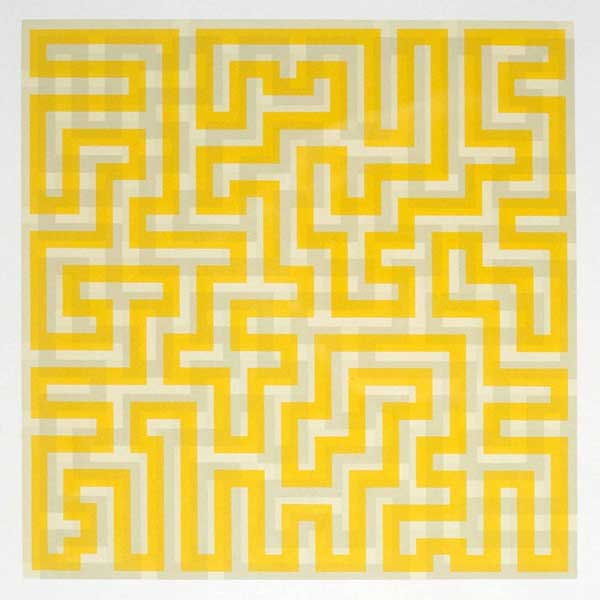“We must find our way back to simplicity of conception in order to find ourselves. For only by simplicity can we experience meaning, and only by experiencing meaning can we become qualified for independent comprehension.” ~ Anni Albers, Black Mountain College Bulletin, 5, 1938. Reprinted in College Art Journal III:2, January 1944, pp.51–54 and in Anni Albers: On Designing, 1959 and 1971.
Anni Albers (1899 – 1994) is often cited as the foremost textile designer of the twentieth century. Born in Berlin, she enrolled at the Bauhaus in 1922. Albers was automatically assigned, as was the case with women students, to the weaving workshop. She quickly embraced textile design as a medium and developed a sophisticated knowledge of weaving structure, technique and materials. A pioneering weaver, printmaker and writer, she reintroduced the open weave into modern fabric design, and used textiles both as a basis of vibrant abstract wall hangings and functional upholstery and drapery materials. In 1933, Anni and Josef Albers left Nazi Germany for the United States, where she taught weaving and textile design at Black Mountain College from fall 1933 through spring 1949.
(via Mary Emma Harris and the Josef and Anni Albers Foundation)
LINDSEY’S TAKE
See why Development & Communications Associate Lindsey Solomon says this work is her favorite in the Museum’s Collection:
If I were to choose a piece from our Collection to have in my own home, it would be Yellow Meander. It has so many things I love in a work of art—sharp graphic imagery, abstraction, happy color, and a killer title that makes you ponder your own life’s path.
Anni Albers, Yellow Meander, 1970, screenprint on paper, edition 26/75, 19 1/2 x 19 1/2 inches, Black Mountain College Collection, Museum Purchase, 1992.09.64. © The Josef and Anni Albers Foundation / Artists Rights Society (ARS), NY
 Anni Albers, Yellow Meander, 1970, serigraph on paper, 19.5 x 19.5 inches. Museum Purchase.
Anni Albers, Yellow Meander, 1970, serigraph on paper, 19.5 x 19.5 inches. Museum Purchase. 